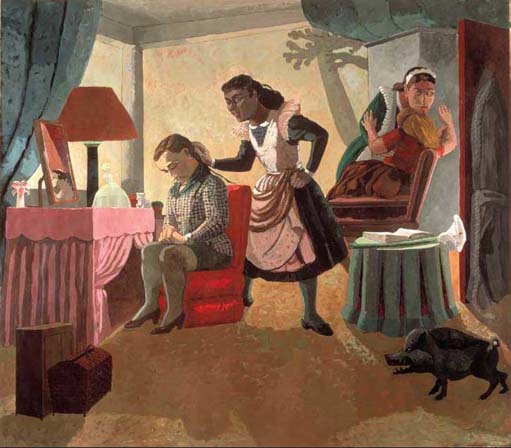8 Meaning and interpretation
In this section you'll begin to develop your skills in using the Study Diamond to construct well-argued interpretations. You'll use the evidence that you've already gathered relating to the relationship between techniques and effects in The Maids and No Woman No Cry to support an argument about the possible meaning of these art works.
Activity 13: An initial interpretation of The Maids and No Woman No Cry
Look again at Plates 3 and 4 and spend a little time thinking about what each of these works might mean, and the message or messages that the art works might convey. Make some notes recording your thoughts.
Plate 3

Plate 4

You will only be able to offer an initial interpretation at this stage as we have not considered the context. Don't worry if you don't yet have a clear idea of what these art works might mean. Your answer at this stage can be quite speculative, perhaps a few suggestions which you're not yet sure about, or perhaps a list of your ideas or thoughts about the art works. As far as possible, your suggestion about the possible meaning of these art works should be based on your existing ideas about the relationship between effects and techniques in each one.
Discussion
Do you have clear ideas about what you think these art works might mean? If you do have ideas about the meaning of these works, you should be prepared to revise them once you've learned a little more about each artist and about the context in which the art works were produced. It's important to keep an open mind when interpreting art works. It's also important to acknowledge that other people may reach very different conclusions about the meaning of a particular art work. However, even if your own interpretation of the meaning of an art work is different from those of other people, it will still be valid if it is based on evidence about the relationship between techniques and effects.
